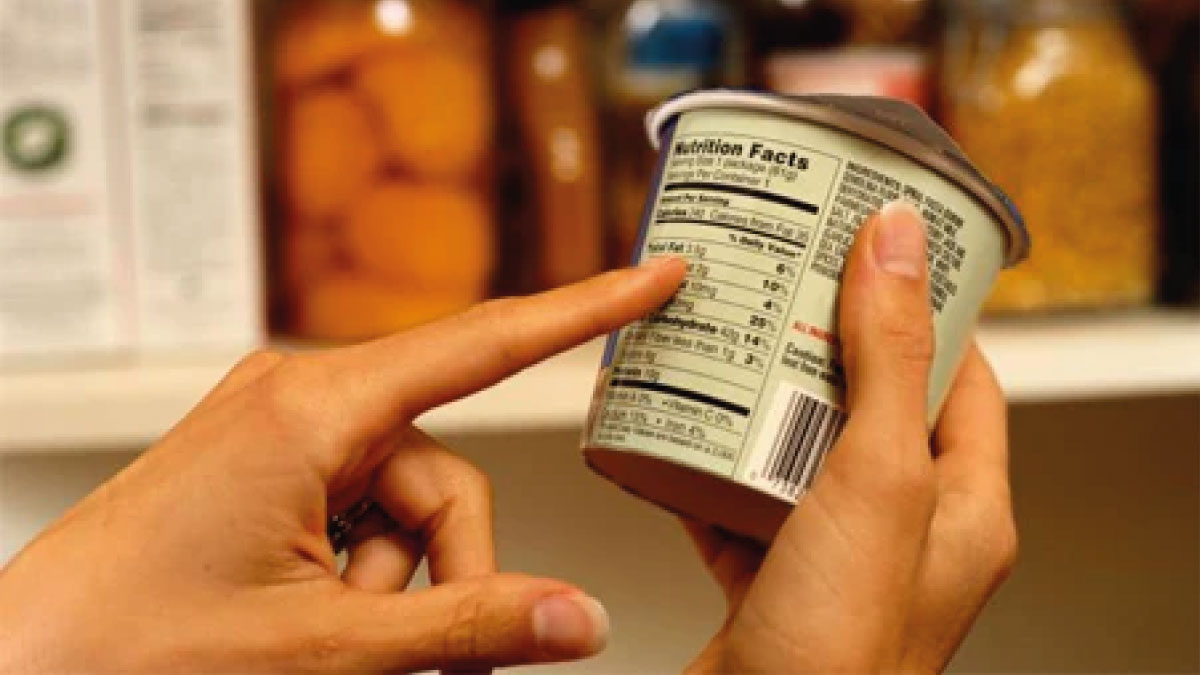Although we usually rely on the nutritional facts label on packaged foods or beverages, we often forget to turn the product over to look at the back.
Whether a food contains a small or large amount of a nutrient does not mean that it is the best or healthiest option. Each nutrient has specific daily recommendations for consumption, which have been tested through research studies, showing that they have benefits and represent little or no risk to our health.
When we get caught up in what seems healthy, without being sure that it is, we fall into the trap and choose foods that can sabotage our efforts to maintain good eating habits. That is why it is important to know the composition of what we buy, without being guided by misleading terms.
Here are some suggestions to help you decide on the healthiest options, carried out by renowned public health specialist and obesologist Samar Yorde, author of the book @Soy saludable en la cocina.
CALORIES:
Low in calories: 40 calories or less per serving. These are good options when choosing packaged foods. However, don't forget to check where those calories are coming from: sugar, fat, protein? Fats provide 9 kilocalories per gram, while proteins and carbohydrates provide 4 kilocalories per gram.
Reduced calories: It contains 25% fewer calories per serving when compared to a similar food. It doesn't mean it's low in calories, it's simply a better option than an identical product with more calories.
Light: contains one-third fewer calories or 50% less fat per serving. Light does not mean low in calories, it only indicates that it contains fewer calories than another similar food, nor does it mean that it does not contain fat, it only indicates that it contains half the fat of another version of the same food.
SUGARS:
No added sugar: indicates that it does not contain any added extras such as sucrose, glucose, maltose, dextrose, high fructose corn syrup, corn syrup, evaporated/dehydrated cane juice, concentrated fruit juice and honey, however it may contain the natural sugars of the food, as is the case of fruits that contain fructose.
Reduced in sugar: contains at least 25% less sugar than a similar food. Remember: just because the sugar content is reduced doesn't mean it's beneficial, it's simply a better option than the original sugary version of the same food.
Sugar Free: contain less than 1/2 gram (0.5 grams) of sugar per serving. They are the best choice! Try to frequently consume foods that contain less than 5 grams of sugar in 100 grams of solid food or less than 2.5 grams of sugar in 100 ml of a drink.
FATS:
Fatfree: Contains less than 1/2 gram of fat per serving. They are a good option to consume. However, check the nutritional label for the complete content of the food; sometimes when the amount of fat is restricted, it is replaced by sodium or sugars to improve the flavor.
Reduced fat: less than 25% less fat compared to a similar food or its original version. They are not the most recommended, but they are a better option than the original version.
Low in fat: It is the best option! It has 3 grams or less of fat per serving. In general, this type of food is not very caloric and is the best option to take care of our cardiovascular health. Choose foods with low fat content: 3g or less of total fat and 1g or less of saturated fat.
CHOLESTEROL:
Cholesterol free: less than 2 milligrams of cholesterol per serving and 2 grams or less of saturated fat per serving. Few foods have this composition. It would be ideal to always choose this type of food.
Low in cholesterol: 20 milligrams or less of cholesterol per serving and 2 grams or less of saturated fat per serving. This food is also an excellent choice for taking care of your health.
SALT AND SODIUM:
The World Health Organization recommends that salt consumption should not exceed 2.5-5 grams DAILY. To stay within the recommended values, you should choose foods with low sodium content, which is ALWAYS indicated on the label, and the recommended daily value (DV) is also indicated: it should be between 5% and 20%.
Sodium Free: contains less than 5 milligrams of sodium per serving; “Salt-free” is when it meets the requirements for being sodium-free.
Remember: Not all that glitters is gold. Don't be fooled by advertising! Learn to read the nutritional label and familiarize yourself with these qualities of foods, this way choosing healthy products will be much easier.




